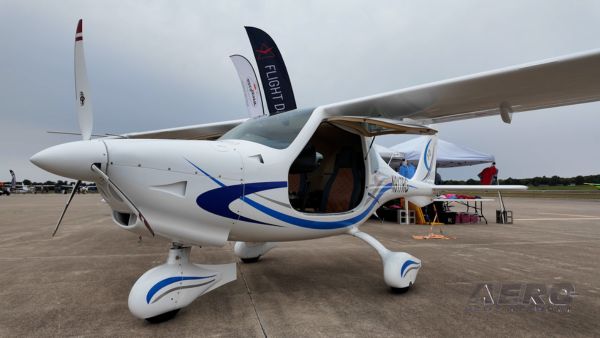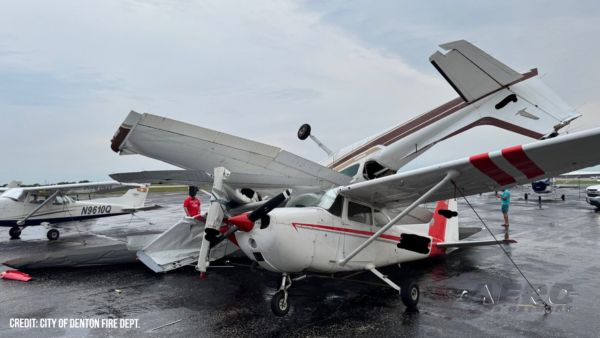Aircraft Appears To Have Gone Down Among Trees During Accident Sequence
The NTSB has released a preliminary report from an accident which occurred on October 18 involving a Sportine Aviacija Lak-17B motorized glider. The commercial pilot was fatally injured and the aircraft was substantially damaged when it impacted terrain near Tamaqua, Pennsylvania. Visual meteorological conditions prevailed, and no flight plan was filed for the personal local flight that departed Blairstown Airport (1N7), Blairstown, New Jersey about 0945. The glider was owned and operated by the commercial pilot.

A witness who is also a glider pilot stated that the accident flight was among a group of three other cross-county glider flights that intended to depart 1N7, fly over Burnt Cabins, Pennsylvania, and then return to 1N7. The witness stated that he departed 1N7 around 0930, and the accident glider took off around 0945. He further stated that it was not common for the glider pilots to fly together but they would maintain radio contact throughout the day and help each other with geographical points and finding thermals for lift. He said that around 1400 the accident pilot radioed and said that he was at Burnt Cabins and turning around to return to 1N7. Around 1515, the accident pilot reported that he was climbing in a weak thermal near Tamaqua, Pennsylvania. That was the last communication he heard from the accident pilot.
According to another witness, he was working outside when he looked up and saw "an airplane" about .5 mile away heading straight down. He stopped and watched "the airplane" for a few seconds before it disappeared behind some trees.
The glider was located on the side of a ridgeline at an elevation about 1,100 ft mean sea level. The wreckage was inverted and on a 210° heading. The wings remained attached to the fuselage. The leading edges of both wings had tree limb impressions along the length of the wings. The cockpit, canopy and nose were crushed by impact forces. The instrument panel was destroyed. The 5-point harness remained intact and was cut by rescue personnel. The single landing gear was retracted. The flaps remained attached to the wings and were retracted. The ailerons were fractured off both wings. The tail section was fractured off the fuselage. The rudder and elevator remained attached to the tail section. Flight control continuity was established to all flight controls through broken torque tubes and cables. The torque tubes fractures were consistent with overstress separations as a result of impact forces. The electric motor was fractured off the motor mounts. The propeller blades were destroyed, and the motor
would not rotate due to impact damage. The two battery packs were still mounted in the battery bracket behind the pilot seat. The battery posts were fractured off. A FLARM and LxNav avionics system was removed from the wreckage and forwarded to the National Transportation Safety Board Vehicle Recorders Laboratory, Washington, DC, for data download.
The single seat motorized glider was issued a Federal Aviation Administration (FAA) airworthiness certificate in the experimental category for the purpose of exhibition/air racing on June 8, 2015. It was equipped with a Front Electric Sustainer (FES) system, which was electrically driven by two lithium battery packs.
The pilot held a commercial pilot certificate, with ratings for airplane single-engine land and glider. His most recent FAA third-class medical certificate was issued on October 4, 2010. He reported 300 hours of total flight experience at that time.
The recorded weather at Jake Arner Memorial Airport, located 8 miles southeast of the accident site, at 1539, was: wind from 280° at 9 knots; visibility 10 statute miles; clear sky; temperature 14° C; dew point 2° C; altimeter 29.93 inches of mercury.
(Image from file. Not accident aircraft)
 Aero-News: Quote of the Day (09.12.25)
Aero-News: Quote of the Day (09.12.25) First-ever Jetson ONE eVTOL Delivery Goes to Oculus Founder
First-ever Jetson ONE eVTOL Delivery Goes to Oculus Founder Hawaiian Airlines, Honolulu CC Start Mx Tech Program
Hawaiian Airlines, Honolulu CC Start Mx Tech Program Bristell Receives First FAA Part 23 Certification for its B23 Trainer
Bristell Receives First FAA Part 23 Certification for its B23 Trainer Blue Alchemist Successfully Completes Critical Design Review
Blue Alchemist Successfully Completes Critical Design Review



